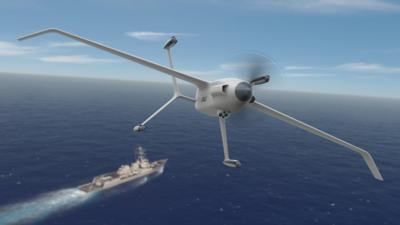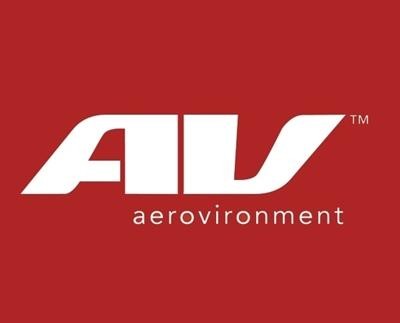Fri, May 31, 2024
ANCILLARY Program Gets New Contender
AeroVironmen'ts Group 3 Wildcat is now being honed as one of the Defense Advanced Research Projects Agency's inscrutably designated 'AdvaNced airCraft Infrastructure-Less Launch And RecoverY' program.

In typical DARPA try hard fashion, the program is probably more 'backronym' than 'acronym', but ANCILLARY is easier to remember so it makes sense why it stuck. AeroVironment is hoping its little Wildcat will be the most promising of the bunch, since it offers the right blend of endurance, payload, VTOL and landing performance while managing to host enhanced autonomy.
AeroVironment knows that the hardware is only part of what makes a successful UAS these days, so they promise the inclusion of their SPOTR-Edge machine learning visual system as the cornerstone of the Wildcat's performance. Their work on Group 1 to 3 UAVs over millions of flight hours with the JUMP 20, Puma AE, and Raven systems has provided a base of understanding that AeroVironment hopes will be the decisive edge against the competition.

The Wildcat isn't just an off-the-shelf model from the AeroVironment attic, either. It has been designed specifically to meet DARPA's ANCILLARY tender, offering a 450 nm radius, 12-hour endurance, and 60-lb payload. It even improves on the minimum sea state landing requirements, allowing them to recover it even in poorer weather than they expected the final product to handle.
“We have prioritized controllability to ensure Wildcat meets the ‘anytime, anywhere’ goal of DARPA’s ANCILLARY program,” said AeroVironment's Vice President of MacCready Works, Chris Fisher. “Wildcat leans on autonomy to reduce operational burdens while enabling safe, infrastructure-less launch and recovery in challenging conditions from a range of Navy ships. Our solutions are specifically crafted for the operator and Wildcat is no exception. AV has a strong history of seamlessly integrating our systems into a soldier’s daily operations and we look forward to further developing this design in partnership with DARPA and the Office of Naval Research for the ANCILLARY program."
More News
Ground Stop (GS) The GS is a process that requires aircraft that meet a specific criteria to remain on the ground. The criteria may be airport specific, airspace specific, or equip>[...]
Aero Linx: Australian Transport Safety Bureau (ATSB) The Australian Transport Safety Bureau (ATSB) improves safety and public confidence in aviation, marine and rail transport thro>[...]
“The Palo Alto stopover confirmed—yet again—that flight schools and aero-clubs are no longer just curious about electric training; they are ready to buy. In just >[...]
Pilot’s Failure To Maintain Clearance From The Water While Flying At A Low Altitude Analysis: The flight of two airplanes was in cruise flight on a north heading about 50 ft >[...]
Also: 48th Annual Air Race Classic, Hot Air Balloon Fire, FAA v Banning 100LL, Complete Remote Pilot The news Piper PA-18 Super Cub owners have been waiting for has finally arrived>[...]
 ANN's Daily Aero-Term (06.30.25): Ground Stop (GS)
ANN's Daily Aero-Term (06.30.25): Ground Stop (GS) ANN's Daily Aero-Linx (06.30.25)
ANN's Daily Aero-Linx (06.30.25) Aero-News: Quote of the Day (06.30.25)
Aero-News: Quote of the Day (06.30.25) NTSB Final Report: ICON A5
NTSB Final Report: ICON A5 Airborne Affordable Flyers 06.26.25: PA18 Upgrades, Delta Force, Rhinebeck
Airborne Affordable Flyers 06.26.25: PA18 Upgrades, Delta Force, Rhinebeck




